As long as there have been railroads, there have been railfans. During the Depression years of the 1930s, as one streetcar or interurban after another vanished from the scene, small groups of railfans banded together in an ad hoc fashion to save bits and pieces before it all disappeared completely. At first, some of these collections had nowhere to operate, and over time, short stretches of track were built to run them on.
That was about as much of an agenda as they had back then, but over time, these efforts created fledgling railway museums in various parts of the country. Some have grown and thrived, while others failed and have fallen by the wayside. In some cases, museum tracks are on old interurban rights-of-way, while others were built from scratch.
Over time, old techniques were reclaimed, redeveloped, and relearned from the experience of an earlier age, or even, in many instances, done from scratch through a process of trial and error. In the process, some amazing work has been done, and a few of yesterday’s chicken coops are today’s operating cars.
The Seashore Trolley Museum in Kennebunkport, Maine started in 1939, but at first, even its backers didn’t call it a museum- it was the Seashore Electric Railroad. But as these are generally “demonstration” railroads that don’t take people from point A to point B, it made more sense to think of it as a museum.
Some of the first cars to be saved were open-air trolleys, which were quickly going the way of the dinosaur. Fairmount Park Transit in Philadelphia was the last regular operator of open cars in the US when it was abandoned in 1946.
The Illinois Railway Museum, which today has the largest collection in the country, began life on the property of the Chicago Hardware Foundry in North Chicago, adjacent to the CNS&M. But as the collection grew, and the North Shore Line quit in 1963, a larger, and more permanent home had to be found. You can read the entire fascinating story here on the excellent Hicks Car Works blog.
Even those museum operations that failed served as a bridge that preserved equipment that eventually found a new home somewhere else later on. The Columbia Park and Southwester, aka “Trolleyville USA,” in Olmstead Township, Ohio is a case in point. Businessman Gerald E. Brookins had the wherewithal to assemble a collection of about 30 cars in the 1950s and 60s, and maintained them with a staff of several mechanics. Brookins’ contemporaries did not have these resources, and as a result, much rolling stock that would have been lost got saved, despite the sometimes inauthentic paint schemes he had them done up in.
His operation was part trolley museum, part practical transportation, as trolleys carried people between his trailer park and his shopping center. After his death in the early 1980s, his family kept the line going for several years, but the museum had to close after they sold the trailer park. The collection was brought to Cleveland with plans for a “heritage trolley” there, but when this fell through, the entire collection was sold at auction. Illinois museums were the main beneficiaries of this sale, since the Brookins collection was rich in both CA&E and AE&FR cars.
More and more often, these cars have spent more time in trolley museums than they did in regular service. CA&E car 20 is an example. The oldest operating interurban car in the country, car 20 ran on the CA&E from 1902 to 1957, a total of 55 years. (CA&E was also the last interurban to operate wood cars.) But this year will mark 56 years since the Chicago, Aurora and Elgin ceased passenger service.
In many cases, saving a car did not keep it from deteriorating over time. As an example, compare this 2006 photo of Five Mile Beach Electric Railway car 36 with one from 1945, when it was acquired by the Connecticut Trolley Museum. But at least the car still exists and could be restored.
The Magee Transportation Museum in Bloomsburg, Pennsylvania is another example of one that did not make it. After assembling a collection of perhaps a dozen cars or so, the museum fell victim to both the death of its namesake and the ravages of Hurricane Agnes in 1972. You can read the sad story in a profile of the late Ed Blossom here.
As CERA celebrates its 75th anniversary this year, we tip our hat to those earliest railfans, whose herculean efforts helped preserve history for future generations to come. Under the circumstances, it’s a wonder that anything at all was saved, not that so much was lost. We are truly standing on the shoulders of giants.
-David Sadowski

CA&E wood car 36 on January 1, 1963, shortly after being acquired by Gerald E. Brookins for the Columbia Park & Southwestern, aka “Trolleyville USA .” This car is now at the Illinois Railway Museum. (Photo by Richard S. Short, Author’s collection)
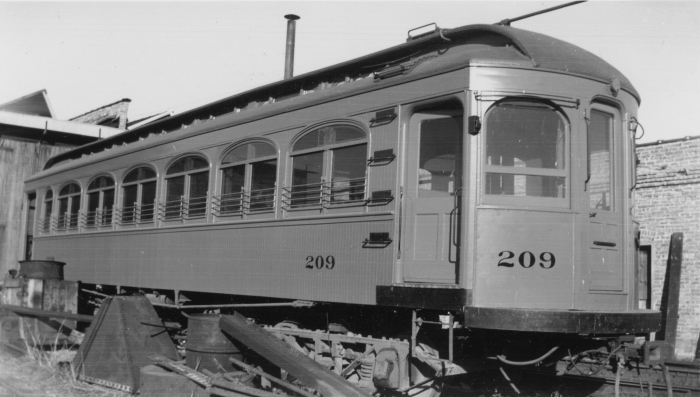
Elgin and Belvidere Electric Company car 209 had just been freshly painted in 1930 after being converted to one-man operation, when the line quit abruptly. The car sat at Marengo for years in hopes of finding a buyer. The Illinois Railway Museum runs over a portion of the former Elgin and Belvidere right-of-way. (Photo by Ed Frank, Jr., Author’s collection)
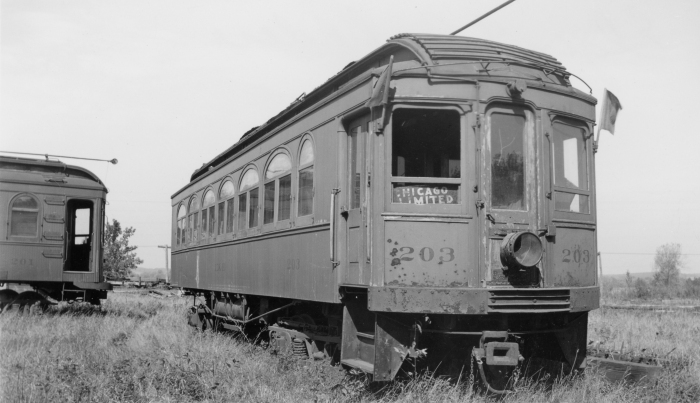
Elgin and Belvidere Electric car 203 sits abandoned in this 1930s photo. I think the photographer added the flags and the lantern to make the picture look better. (Photo by Ed Frank, Jr., Author’s collection)
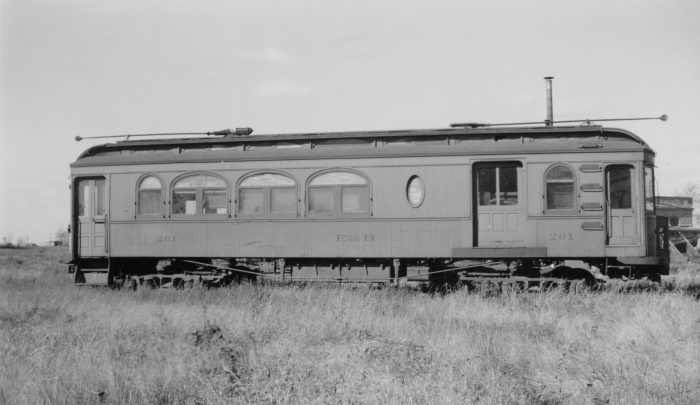
Elgin and Belvidere Electric car 201 sits abandoned in this 1930s photo. (Photo by Ed Frank, Jr., Author’s collection)
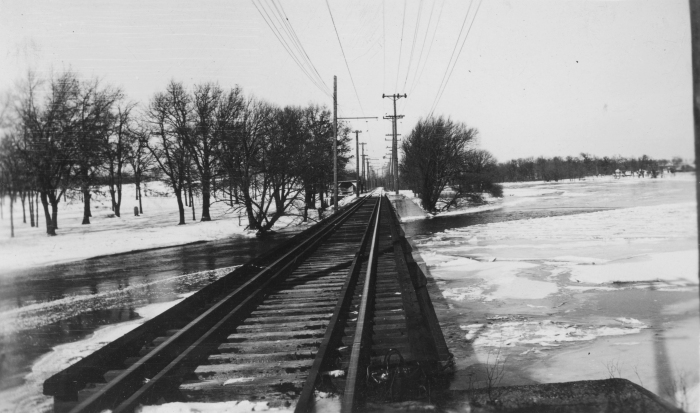
A 1930s view of the Aurora, Elgin & Fox River right-of-way, near the site of today’s Fox River Trolley Museum. (Photo by Ed Frank, Jr., Author’s collection)

The Lehigh Valley Transit scrap track circa 1938. (Author’s collection)
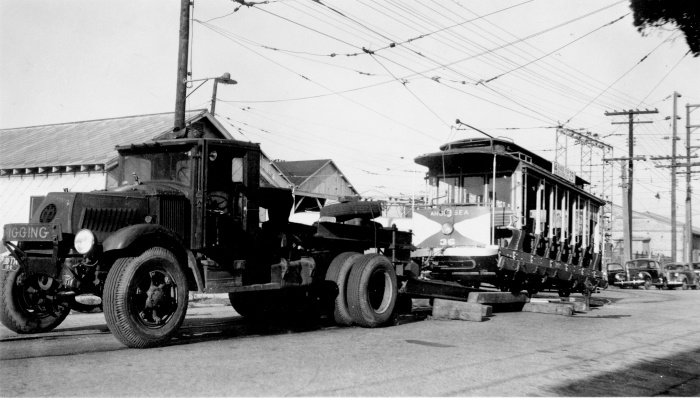
Here, we see Five Mile Beach Electric Railway car 36 in 1945, being transported to its current home at the Connecticut Trolley Museum in East Windsor. (Author’s collection)
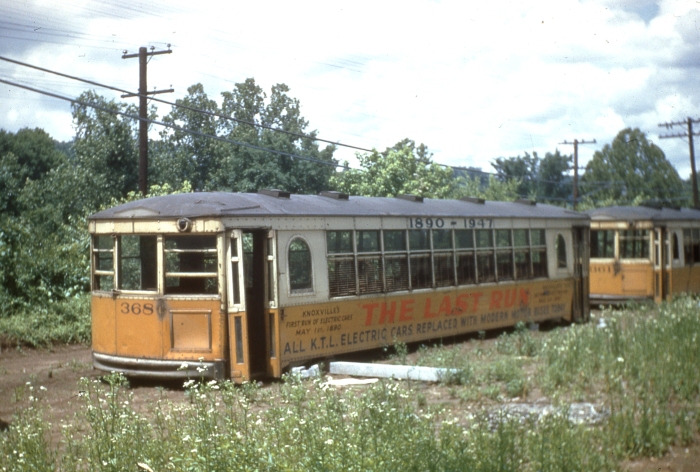
Knoxville trolleys abandoned in a field after the last run in 1947. (Author’s collection)
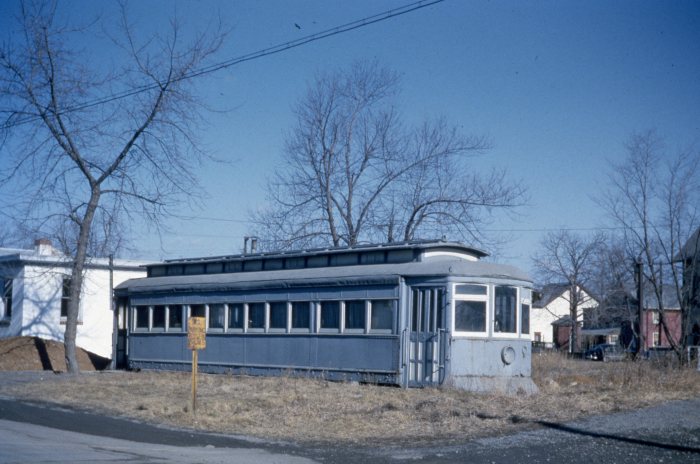
In this early 1950s view, a Lehigh Valley Transit Co. city streetcar has been converted into someone’s storage shed or chicken coop. (Author’s collection)
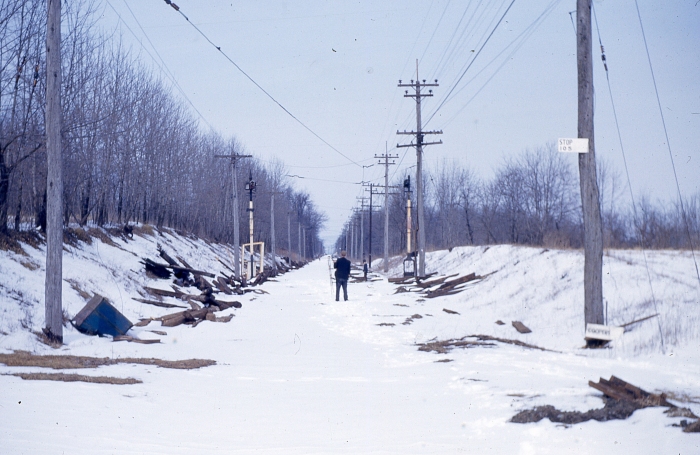
The abandoned right-of-way of the Liberty Bell Limited interurban in Pennsylvania, during the winter of 1951-52. Some of the signals from this line are now in use at the Seashore Trolley Museum in Maine. (Author’s collection)
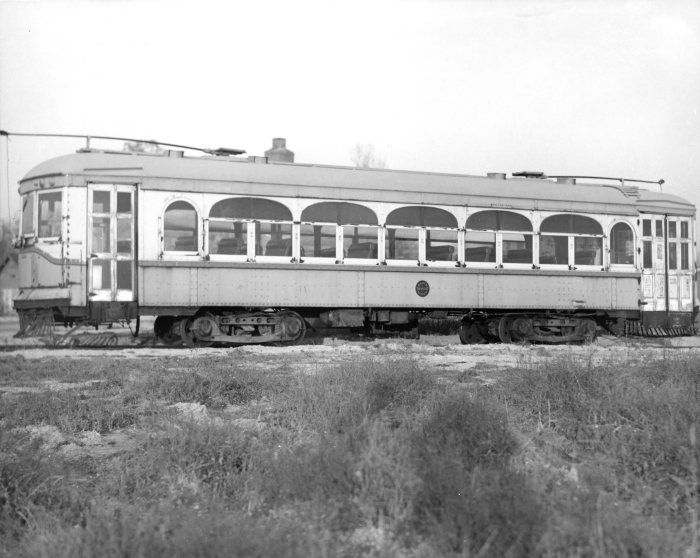
Aurora, Elgin & Fox River 306, shortly after it arrived at the Columbia Park and Southwestern aka “Trolleyville USA” in 1954. Gerald Brookins acquired it from Shaker Heights Rapid Transit. This car is now at the Illinois Railway Museum. (Photo by George Snyder, from Author’s collection)
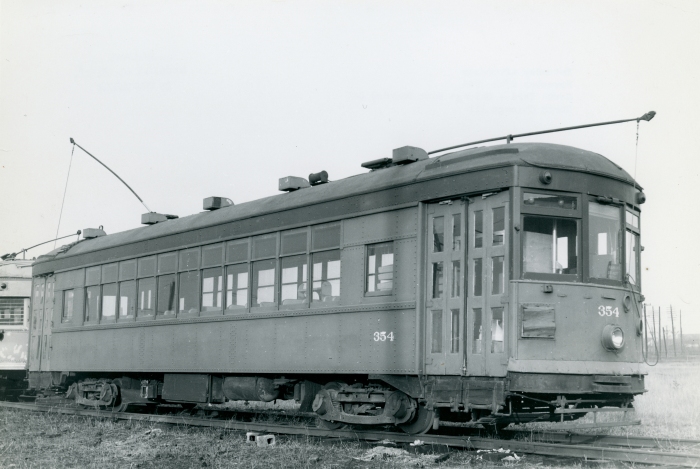
North Shore Line city car 354 on November 27, 1954, at the Chicago Hardware Foundry Co., one of the first acquisitions of the Illinois Electric Railway Museum, today’s IRM in Union. (Photo by Bob Selle, Author’s collection)
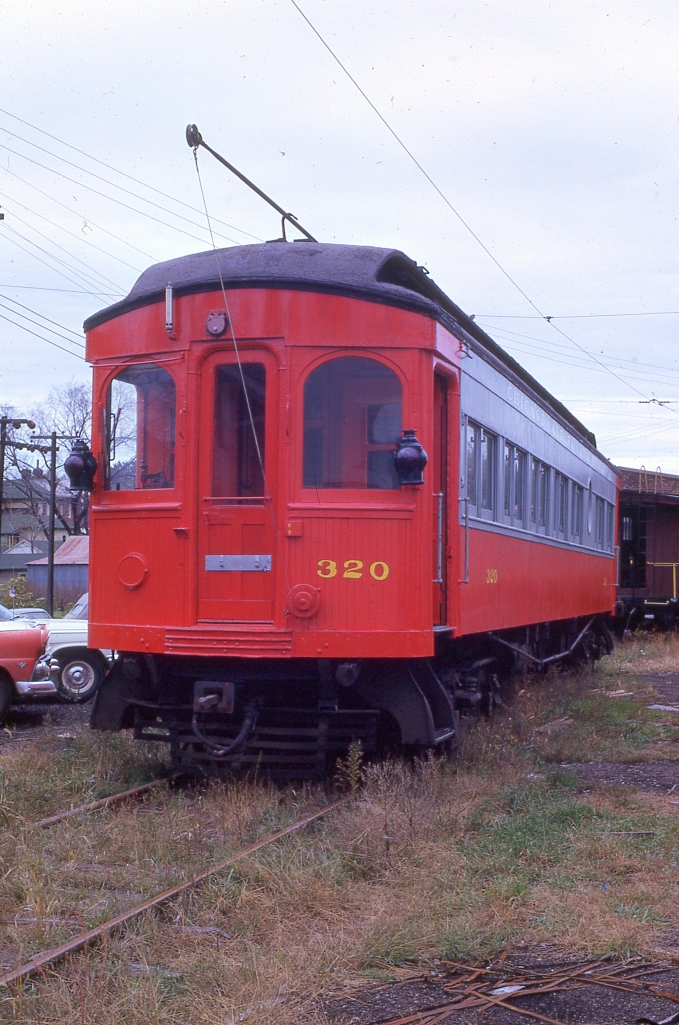
CA&E 320 was the last car moved off the property in early 1962. The car was purchased by the Iowa Chapter of NRHS and is shown here later that same year. It is now at the Midwest Electric Railway in Mount Pleasant, Iowa. (Author’s collection)
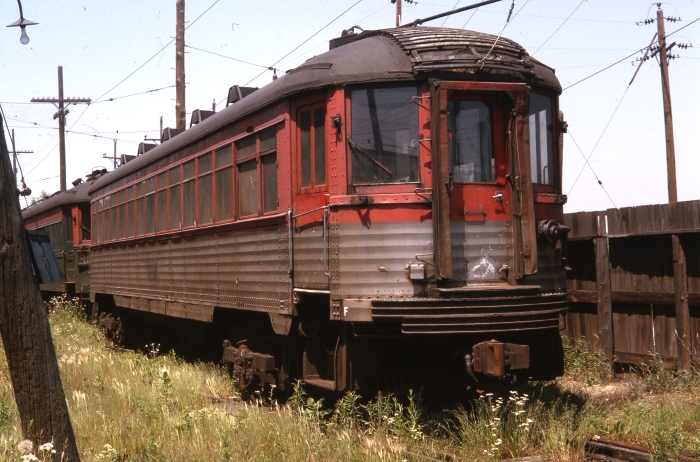
North Shore Line cars await potential buyers while the weeds grow up around them after the 1963 abandonment. (Author’s collection)
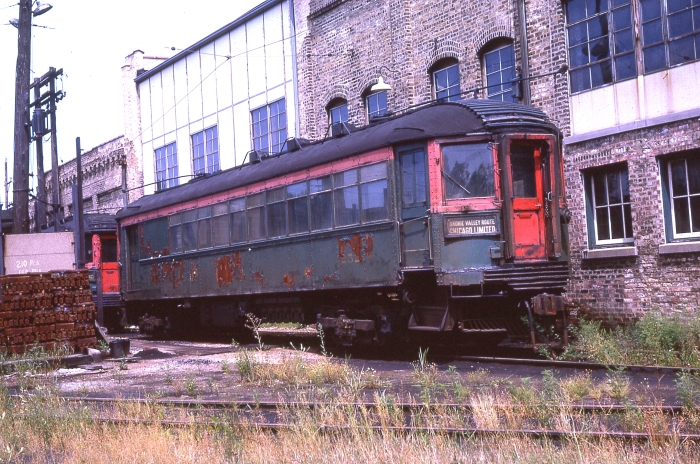
CNS&M cars sat around outside for at least a year at North Chicago before being scrapped. I don’t think this car was saved. (Author’s collection)

Lehigh Valley Transit interurban car 801, built by Jewett Car Co. in 1912, became a cottage for a time, but was eventually restored. Here we see it about to receive the trucks from sister car 808, which spent time in the Philadelphia subway doing trash collection. Currently, 801 is at the Electric City Trolley Museum in Scranton, PA. (Author’s collection)
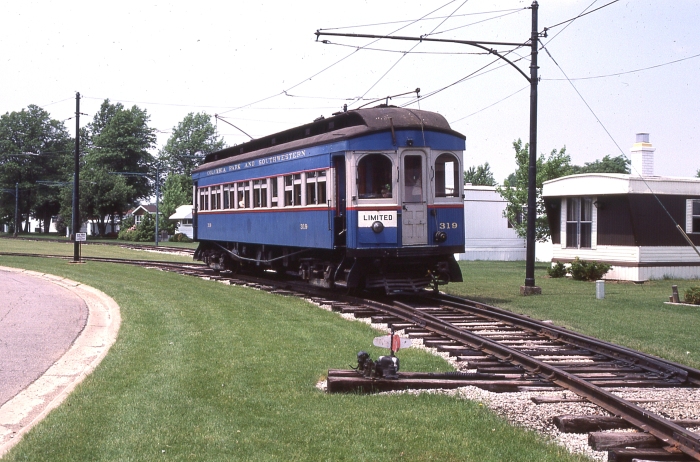
CA&E 319 in Ohio on the Columbia Park and Southwestern aka “Trolleyville USA” in 1984. This car is now at the Illinois Railway Museum. (Photo by David Sadowski)
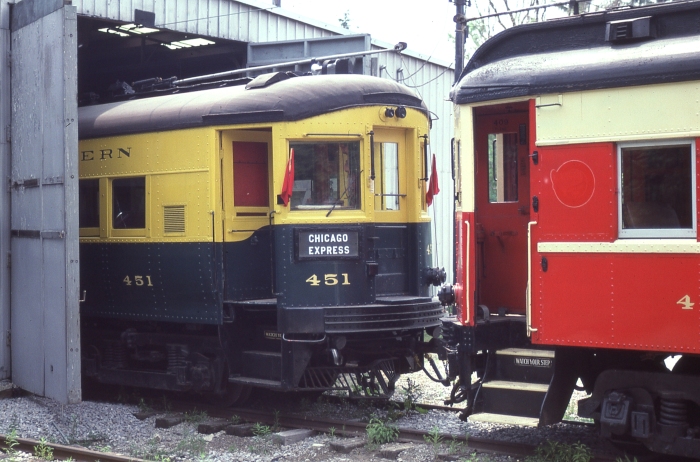
A 1984 shot of CA&E 451 (with a rather odd color scheme) in Olmstead Township, Ohio on the Columbia Park and Southwestern aka “Trolleyville USA.” This car is now at the Illinois Railway Museum. (Photo by David Sadowski)

Even some of the museums have not survived. The Penn’s Landing Trolley (shown here in 1985) operated in Philadelphia from 1982 to 1995. (Photo by David Sadowski)

CA&E 20 at the Fox River Trolley Museum in the 1980s. It is the oldest operating interurban car in the US. (Photo by David Sadowski)